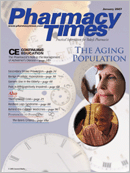Publication
Article
Pharmacy Times
case STUDIES
CASEONE:JT is a 5-year-old boy whowas brought to the children'shospital emergency departmentby his parents after spikinga fever of 102.1°F overnight.JT's mother also informsthe doctors that JT has hadpoor food intake since his lastchemotherapy. This past week,JT was treated with vincristine, high-dose cyclophosphamide,and etoposide. This cycle was week 14 of 54 of the inductionphasechemotherapy for acute lymphoblastic leukemia. JTreceives chemotherapy every other week in the hospital's outpatientclinic.
On this admission, the doctor obtained both a blood cultureand complete blood count. The complete blood count for thepatient showed a white blood count of 1.6, hemoglobin of 9.3,hematocrit 24.6, and platelets 80,000. On physical exam, thepatient has grade II mucositis in the mouth. The patient wasstarted on acetaminophen every 4 to 6 hours as needed forfever, vancomycin every 8 hours, and cefepime every 8 hours.
The doctor admits JT to pediatric oncology. While waitingfor the results of the blood cultures, JT continues to spike afever. When the pharmacist is reviewing JT's chart, she is concernedby the continued temperature spikes. She decides todiscuss the issue during the oncology multidisciplinaryrounds. She would like to broaden JT's antibiotic coverage.
What bacterial species should the pharmacist cover for?What antibiotic should the pharmacist recommend adding tothe regimen to cover this species?
CASETWO:Despite adding gentamicinto his antibiotic therapy, JT isstill spiking fevers after 5 daysof treatment. On the preliminaryresults, the blood culturesdid not grow any bacteria.During morning rounds,the attending physician asksthe medical student what he would recommend. Because themedical student does not have an answer, the attendingphysician instructs him to look it up after rounds and page himwhen he has an answer. Immediately following rounds, themedical student approaches the pharmacist and asks for help.
The pharmacist reminds the medical student that JT isreceiving coverage for gram-positive and gram-negative bacteria.In an attempt to encourage the medical student to thinkthrough the answer, she asks the student what is not beingcovered by the current regimen. Suddenly experiencing anepiphany, the medical student realizes that the current antibiotictherapy does not cover for yeast.
What additional antimicrobial coverage should the medicalstudent recommend?
CASETHREE:Following discharge, JTreturns to the oncology clinicfor another round of chemotherapywith vincristine, highdose cyclophosphamide, andetoposide. The physician whonormally treats JT is on vacation,so a covering physician isassigned to his case. He asks the pharmacist for assistancesince she knows JT's case. Due to the high emetic potential ofJT's regimen, the physician inquires if JT received antiemetictherapy. The pharmacist confirms that JT did receive antiemetics.She also informs him that JT suffers from anticipatory nauseaand vomiting. The physician asks the pharmacist to recommendmedications for both.
What medications should the pharmacist recommend?
Dr. Schlesselman is an assistant clinical professor at the University of Connecticut School of Pharmacy. Mr. Konecny is aPharmD candidate at the University of Connecticut School of Pharmacy.
Click Here For The Answer ----------->
[-]
CASE ONE: Despite antibiotic therapy, JT continues to spike fevers, prompting the pharmacist to consider other bacterial causes. Inparticular, the pharmacist should consider providing coverage for Pseudomonas aeruginosa. To extend the antibiotic coverage to better cover forPseudomonas, the pharmacist recommends adding gentamicin 2 to 2.5 mg/kg/dose every 8 hours. Gentamicin will produce synergy with other antibioticsagainst Pseudomonas. The pharmacist should also recommend obtaining peak levels to assess for efficacy and trough levels to assess for toxicityafter 3 doses.
CASE TWO: To cover for yeast, in particular Candida species, the medical student should recommend adding fluconazole to the therapy. The recommendeddose is 10 to 12 mg/kg/day with a maximum dose of 600 mg/day.
CASE THREE: According to the American Society of Clinical Oncology, the high emetic potential of JT's regimen warrants treatment with a 5-HT3 serotoninreceptor antagonist on day 1, preferably around the clock, in combination with dexamethasone and aprepitant on days 1, 2, and 3. The pharmacistalso recommends lorazepam for JT's anticipatory nausea and vomiting.
toggle(getObject('exp1048685570_link'), 'exp1048685570');







